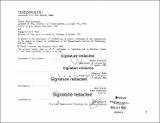| dc.contributor.advisor | Shun Kanda. | en_US |
| dc.contributor.author | Frontiero, Wendy Ellen | en_US |
| dc.contributor.author | Wohl, Margaret Emily | en_US |
| dc.contributor.other | Massachusetts Institute of Technology. Dept. of Architecture. | en_US |
| dc.coverage.spatial | e-uk-en a-cc--- n-us-ca | en_US |
| dc.date.accessioned | 2012-10-10T15:41:54Z | |
| dc.date.available | 2012-10-10T15:41:54Z | |
| dc.date.copyright | 1986 | en_US |
| dc.date.issued | 1986 | en_US |
| dc.identifier.uri | http://hdl.handle.net/1721.1/73752 | |
| dc.description | Thesis (M. Arch.)--Massachusetts Institute of Technology, Dept. of Architecture, 1986. | en_US |
| dc.description | MICROFICHE COPY AVAILABLE IN ARCHIVES AND ROTCH. | en_US |
| dc.description | Includes bibliographical references (p. 157-159). | en_US |
| dc.description.abstract | This thesis is a study of edges: the three-dimensional transitions between one kind of place or activity and another. We consider several scales of architecture where these transitions occur in an urban context, using the cities of Bath (England), Beijing (China), and Santa Monica (California) as the basis of discussion. Both verbal and graphic documentation describe our perceptions of the character of edges in those cities, as observed in the patterns of individual pieces and their inter-relationships. From these case studies, we derive generalizations for making edges clear, stimulating, and adaptable. Chapter One, the introduction, states our objectives and our criteria for selecting the study cities and areas of focus within them. It also describes our working method. Chapter Two considers landscape edges: the relatively Ratural spaces found both around the city, at the outer limits of development, and within the city, in the form of parks and public gardens. Chapter Three describes relationships at the city scale between one group of buildings and the next. It includes connections across streets and across urban places. Chapter Four looks at the area where outside space interfaces with the building interior. Fronts, backs, off-street courts. and top building edges are considered. Chapter Five summarizes and assimilates generalities derived from the study, and suggests what might be done next. | en_US |
| dc.description.statementofresponsibility | by Wendy Ellen Frontiero and Margaret Emily Wohl. | en_US |
| dc.format.extent | 159 p. (2 folded) | en_US |
| dc.language.iso | eng | en_US |
| dc.publisher | Massachusetts Institute of Technology | en_US |
| dc.rights | M.I.T. theses are protected by
copyright. They may be viewed from this source for any purpose, but
reproduction or distribution in any format is prohibited without written
permission. See provided URL for inquiries about permission. | en_US |
| dc.rights.uri | http://dspace.mit.edu/handle/1721.1/7582 | en_US |
| dc.subject | Architecture. | en_US |
| dc.title | Thresholds : landscape, city, and building edges | en_US |
| dc.title.alternative | Landscape, city and building edges | en_US |
| dc.type | Thesis | en_US |
| dc.description.degree | M.Arch. | en_US |
| dc.contributor.department | Massachusetts Institute of Technology. Department of Architecture | |
| dc.identifier.oclc | 15368712 | en_US |
